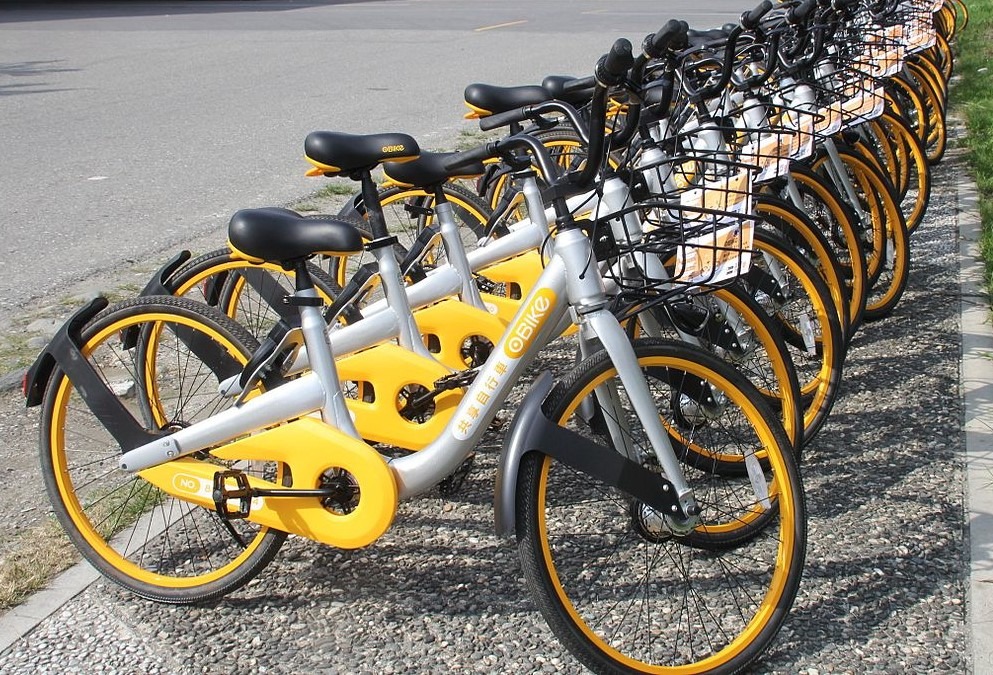Munich is gearing up to host a trade fair on the topic of mobility. Part of the city center has been blocked off for trade fair events and to make space for trying out e-bikes and e-scooters, as anyone who has walked past Odeonsplatz lately will know.
Germany, with its heavy-hitting automotive industry, is an obvious candidate to host the IAA Mobility trade fair this coming week to showcase all kinds of ways of getting around. It will focus especially on sustainability and cutting-edge technology with futuristic electric cars, e-scooters, and e-bikes to admire and test drive.
But Munich has a fraught history with such modes of transportation. The city got its first taste of e-bikes in 2018 with the O-Bike. Actually, it would be more accurate to say the city was force-fed with this bike, because overnight, thousands of these orange two-wheelers appeared on sidewalks, at train stations, and somehow also appeared on balconies, in garages and even bathtubs. All right, I got carried away here, but it is true that all of the sudden, the city was blanketed with them. But it turned out their Singaporean operator did not have a permit.
Maybe it was just an elaborate experiment to test the patience and tolerance of Munich residents, who normally stick to the rules and grumble in private. Not this time. Angered by the orange obstructions, they took revenge. On the bikes. Soon these orange e-contraptions could be seen jammed between bushes, lying prostrate at the bottom of the Isar River, and even dangling precariously from trees. Most of the time they looked as if they had gotten into a scuffle with someone—and lost—with bent frames or missing tires or handlebars.
The company took the hint. They packed up their bikes—or what remained of them—and left.
The city itself now manages fleets of both e-bikes and e-scooters. People’s aggressions have subsided and they now not just accept them, they use them, too. The bikes can be seen lined up neatly in racks at their home base, although you can still find scooters parked in the middle of the sidewalk, apparently by people who flunked scooter school and never learned the proper etiquette.
Aggression towards new technology is at least as old as the loom. In England, Luddites went around smashing them to protest the loss of their jobs to automation, inspired by a weaver who signed letters of protest with the pseudonym “Ned Ludd.” There were no trade unions in those days, so this was a way for workers to exert pressure.
Along with electric cars, there is much speculation about when the self-driving car will arrive on the highway. I am sure Germany will be the last place to get it because even an automated, self-driving car plastered with sensors, cameras, and a whole battery of high-tech equipment will be faced with the most difficult navigation task of all: getting through the labyrinthine red tape of whatever requirements the German government is sure to dream up.
It comes as no surprise that California is one of the first places to introduce self-driving cars, specifically in San Francisco. It has a fleet of hundreds of robotaxis which can be seen patrolling the streets everywhere. They take longer to get somewhere since they go very slowly, and are reputed to have the vague vibe of an amusement park ride—probably like one of those kiddie cars that can’t actually be driven, but which have a horn you can honk. Except you can’t even honk the horn of a self-driving car. San Francisco is home to lots of high-tech enthusiasts, many of whom work in nearby Silicon Valley, so you would expect them to embrace this new technology with open arms.
Well, not quite.
Many San Franciscans are resentful that their city was chosen to be a sort of urban guinea pig for these taxis. The city council approved them but many residents are opposed. A rogue group of people called Safe Street Rebels have found a way to protest by immobilizing the taxis. Someone figured out that if you place a highway cone on the hood of the car, it pretty much freaks the car out. It stops, turns on its hazard lights, and shuts down. Apparently a cone being placed on its hood was not among the thousands of scenarios they ran to train the car.
It’s a case of humans vs. machines. We don’t want machines to have control of us, which is why everyone is so afraid that AI will turn into Hal from Space Odyssey 2001. It’s like when R2D2 got turned off in Star Wars. That little robot was cuter than hell and without it, they couldn’t have saved Princess Leia, but wasn’t it convenient that they could turn him off? This applies even more to C3PO, who couldn’t stop himself from haranguing people, as charming as his English accent was.
I guess we can all imagine people we would like to be able to shut down by flipping a switch. In my case, certain birthday celebrations dominated by talkative octogenarians come to mind. But we’re all entitled to our fantasies.
In the meantime, pay attention if you’re walking through the city of Munich the first week of September. If you happen to encounter a self-driving car, you can take a quick look around for the nearest highway cone to see if you can shut it down. And if you see e-scooters near Odeonsplatz, watch out for first-time scooter drivers.
Brenda Arnold
Photo credit: By Taitung County Government
Want to read more blogs like this? How about these:
Language – To Bavaria with love, infused with dialect for language nerds
German history – A fortune for footwear, or my kingdom for a sneaker
Crazy cultural confrontations – How to get a stranger to voluntarily show you their socks

wonderful, informative, humorous, interesting, hopeful even
So glad you liked it, Sylvia! Thanks once again for your feedback!